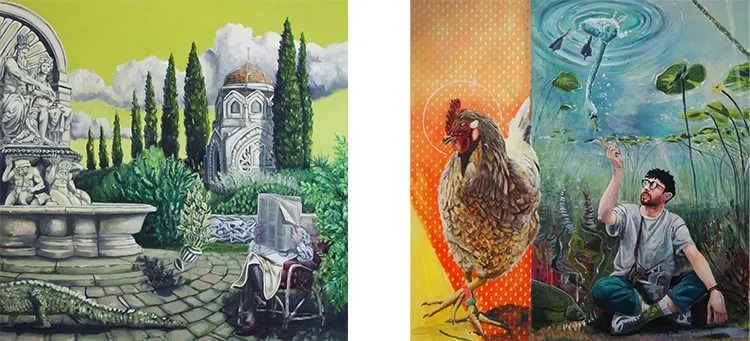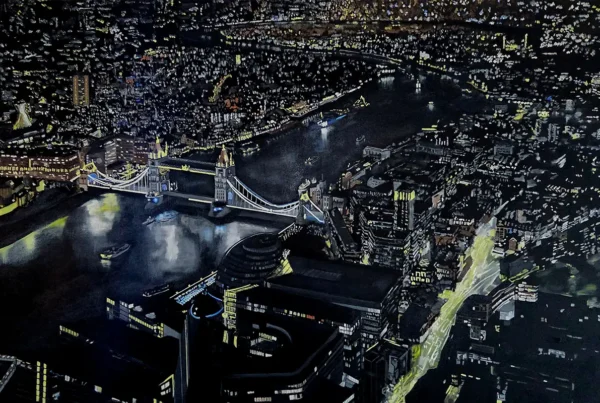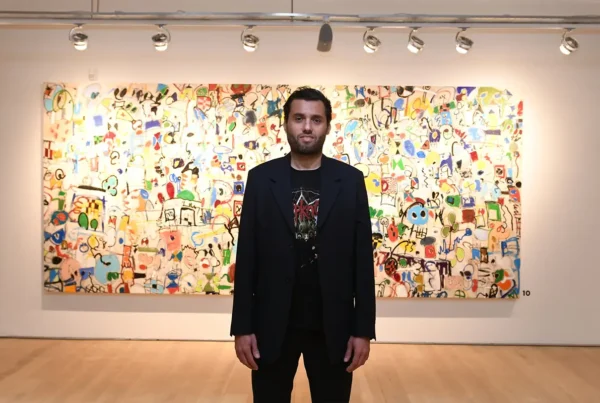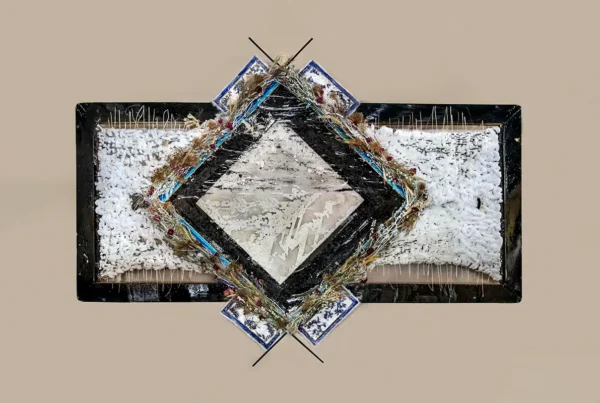“I try to give my opinion a kind of visual expression and yet depict more than one opinion on the topic, because I know that I have a biased view of most topics.”
From Graffiti to Social Commentary: Matthias Lück’s Artistic Journey
Matthias Lück, a Central European artist, carries the weight of his upbringing in the former German Democratic Republic (GDR) into his work. His early life was shaped by the societal and political changes that followed the fall of the Berlin Wall, leaving him with a nuanced understanding of privilege, opportunity, and societal inequality. Lück recognizes that much of the world’s resources are unequally distributed, a reality that informs both his self-reflection and artistic expression. He has a modest view of his place within the art world, aware that many doors remain closed due to circumstances beyond his control. His art, therefore, becomes a personal and profound way to contribute meaningfully to the world—an exploration of both personal responsibility and broader social critique.
Lück’s path to becoming an artist was not traditional. In the 1990s, while wandering through the remnants of a post-reunification Germany, he encountered graffiti in public spaces. These vibrant, often chaotic bursts of color contrasted sharply with the bleak urban environment, providing a source of inspiration during a time of significant political tension. This early encounter with street art left an indelible mark on him, leading him to explore abandoned agricultural sites and military barracks as blank canvases for his creativity. With time, the desire to express himself through art became irresistible, and by the year 2000, Lück was fully immersed in developing his craft, investing every resource he could into paint and spray cans.
His artistic journey reflects a love for the unconventional spaces and moments that sparked his creativity in the first place. Lück’s self-made career is a testament to his belief in art as a vehicle for expression, especially for those who feel marginalized or left behind by the systems around them. Despite his success, he remains critical of the very structures that have shaped his experiences, channeling these critiques into the fabric of his work.
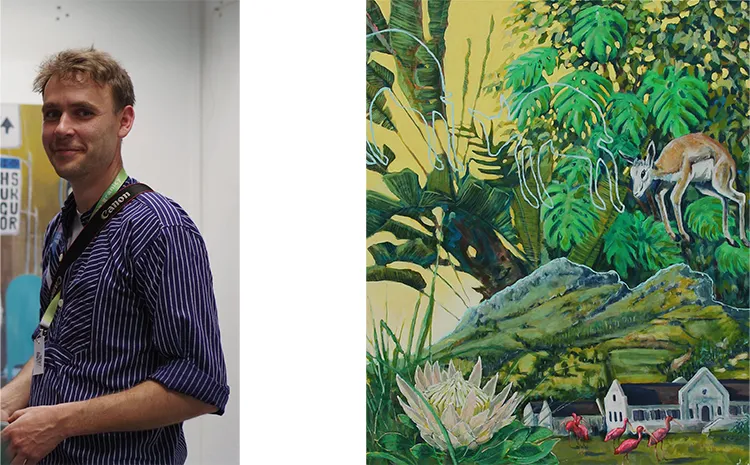
Matthias Lück: Crafting Narratives in a Figurative Style
Today, Lück’s art has evolved into a more figurative, realistic style, though his early roots in graffiti are still evident. His work often tells small, intricate stories that address contemporary social and political themes, creating visual dialogues that explore multiple perspectives on an issue. Lück recognizes the biases that come with his own viewpoint, and through his art, he aims to represent more than just a singular interpretation. His figurative works engage with timeless themes that, he observes, seem to repeat throughout history—errors made by society and individuals alike, appearing again and again in different contexts.
What sets Lück apart is his ability to capture not only his opinion on these matters but also the broader complexity surrounding them. His artworks do not preach one perspective; instead, they encourage viewers to think critically about the subjects they depict. He acknowledges that, as a creator, his views are shaped by his own background and experiences, but he strives to avoid didacticism. Rather, his pieces become spaces for contemplation, where multiple sides of an issue can coexist visually and thematically.
The artist’s studio plays a central role in bringing these visions to life. Located on his property, it serves as a sanctuary where distractions are kept to a minimum. For Lück, the combination of music or an engrossing audiobook and the materials at hand—whether wood panels, canvas, or paper—are all he needs to dive into his creative process. His commitment to staying deeply focused during work sessions ensures that his art emerges from a place of immersion and authenticity, allowing the narratives he constructs to unfold naturally.
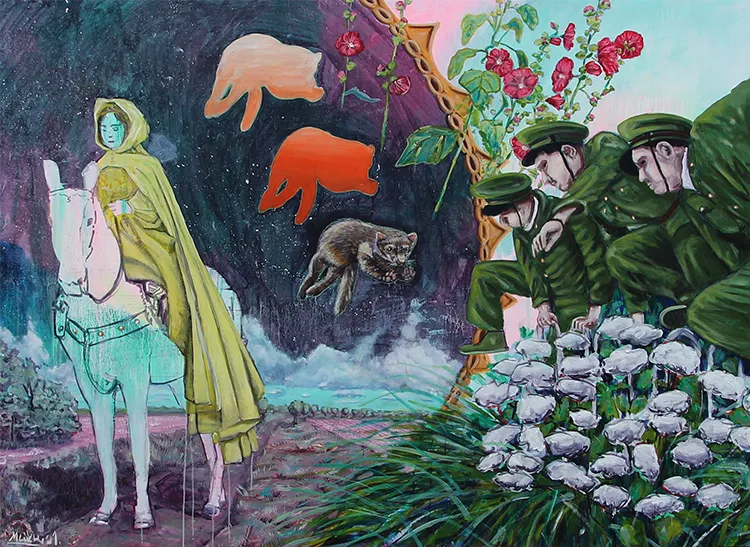
The Influence of Technology and Media on Lück’s Work
While Lück respects the works of many renowned painters, he admits that contemporary technology and social media have had a significant influence on his creative process in recent years. The constant flow of imagery, ideas, and information on these platforms leaves a lasting impression on his mind, often more so than traditional art found in museums. In today’s fast-paced digital age, ideas come and go rapidly, making it difficult to hold onto them for long, yet this fleeting nature of inspiration has become part of his artistic reality.
This awareness of the digital world’s impact speaks to Lück’s broader reflections on society. As a child of the GDR and someone who witnessed the dramatic shift in Eastern Germany post-reunification, he understands the importance of access to art, information, and creative expression. The closure of youth clubs and public spaces in his region has contributed to a lack of communal support, leading many young people to seek solace online, where they can easily fall into the trap of radicalization. Lück sees art as a potential antidote to this trend—a way to re-engage people with their physical environments and foster critical thinking.
This belief drives his dream project: to transform public spaces into interactive art galleries, turning the walls of apartment blocks and public buildings into canvases for his work. By integrating art into everyday life, he hopes to encourage a sense of community and dialogue, especially around the pressing political and social issues that affect everyone. His vision is grounded in the idea that public art can be a powerful tool for education and engagement, helping people navigate the complexities of modern life through creative, thought-provoking expression.
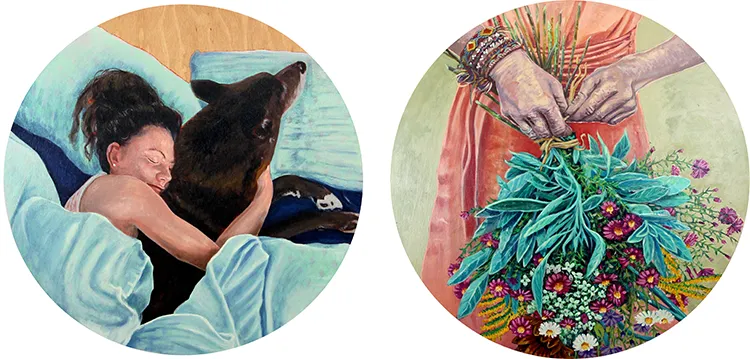
Matthias Lück: The Power of Art in Public Spaces
One artwork that holds special significance for Lück is The Slav Epic by Alfons Maria Mucha. This monumental series of paintings, which chronicles the history of the Slavic people, resonates with Lück’s desire to create art that captures the essence of human experience on a grand scale. Mucha’s ability to blend historical narrative with artistic mastery inspires Lück to pursue projects that elevate public consciousness through art. Like Mucha, Lück aspires to make a lasting impact through his work, offering visual stories that provoke reflection on society’s struggles and triumphs.
Lück’s medium of choice has shifted over the years. Initially, he embraced the spontaneous, tactile nature of graffiti, experimenting with various surfaces and materials, including wood, paper, cardboard, and canvas. These days, his focus has narrowed to painting on wood panels and other traditional mediums, but his past experiments have left him with a versatility that continues to inform his current practice. His studio once resembled the set of a historical epic, filled with materials from different eras and styles, reflecting his deep connection to both the past and present.
Ultimately, Lück’s dream is to make art more accessible to the public. He envisions a world where art isn’t confined to galleries or museums but exists in the spaces where people live and work. By bringing his art to the streets, Lück hopes to spark conversations about the political and social challenges that shape our lives. His commitment to transforming everyday environments into platforms for artistic engagement underscores his belief in the power of creativity to inspire change, especially in communities that have been neglected or overlooked. For Lück, art is not just a personal endeavor but a public mission—one that seeks to awaken awareness and dialogue through the universal language of visual expression.
